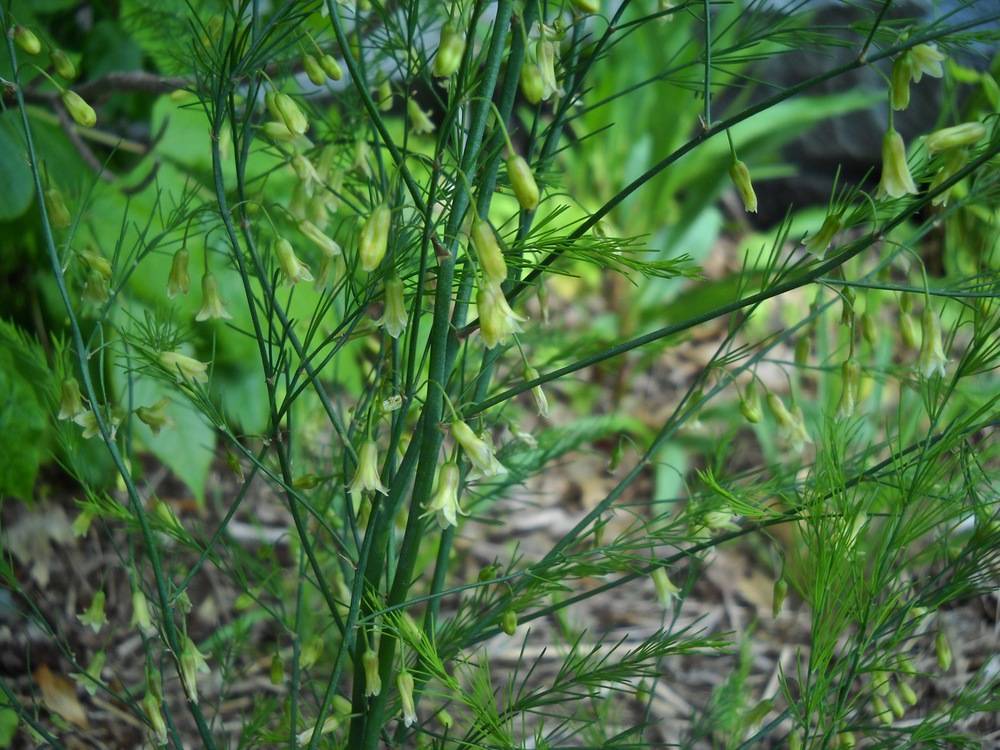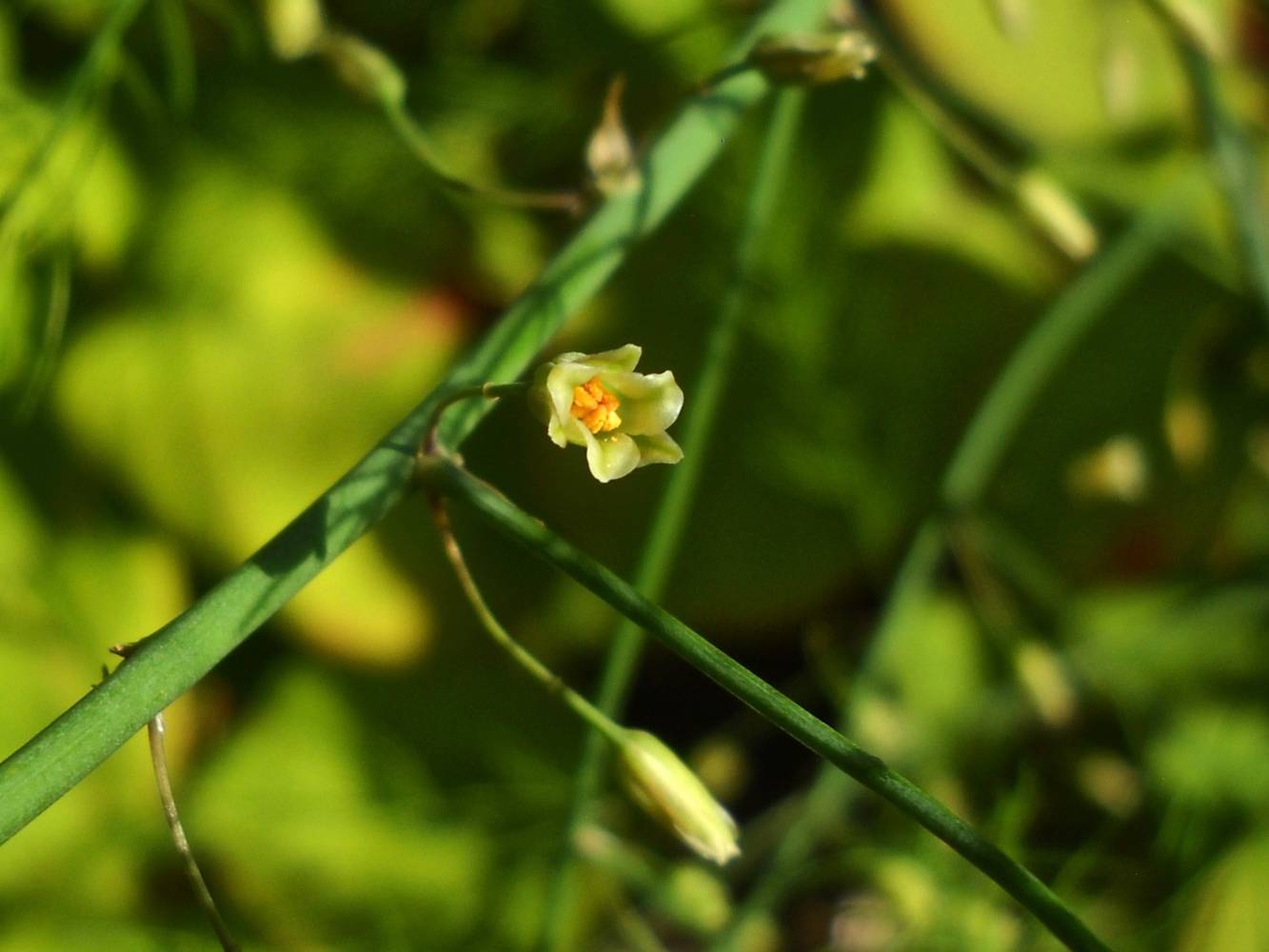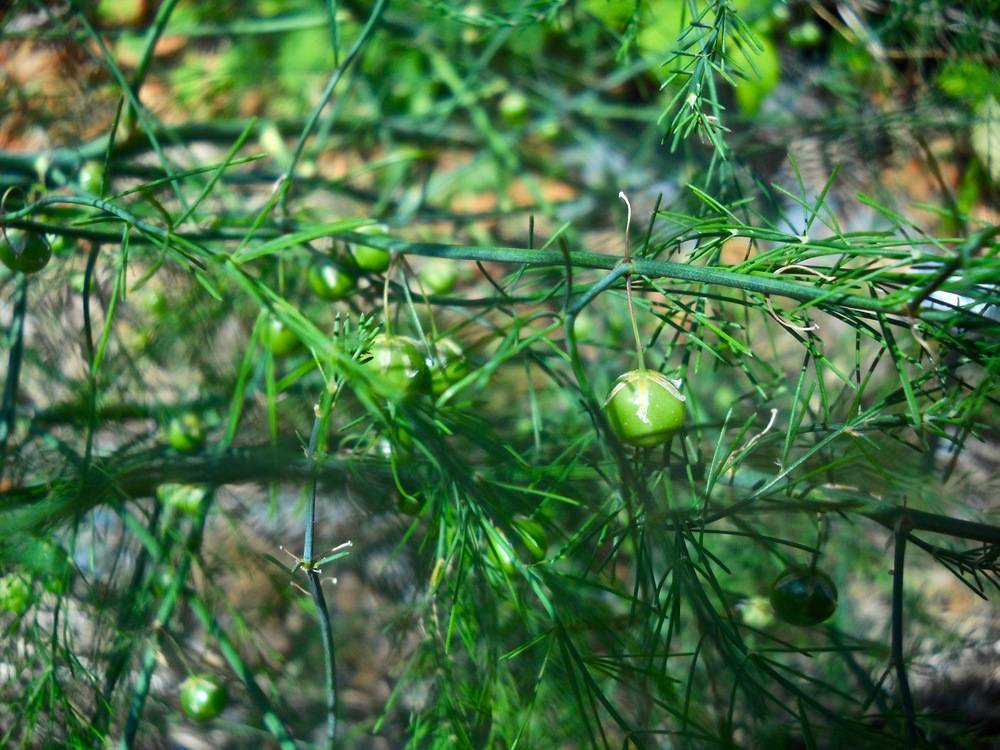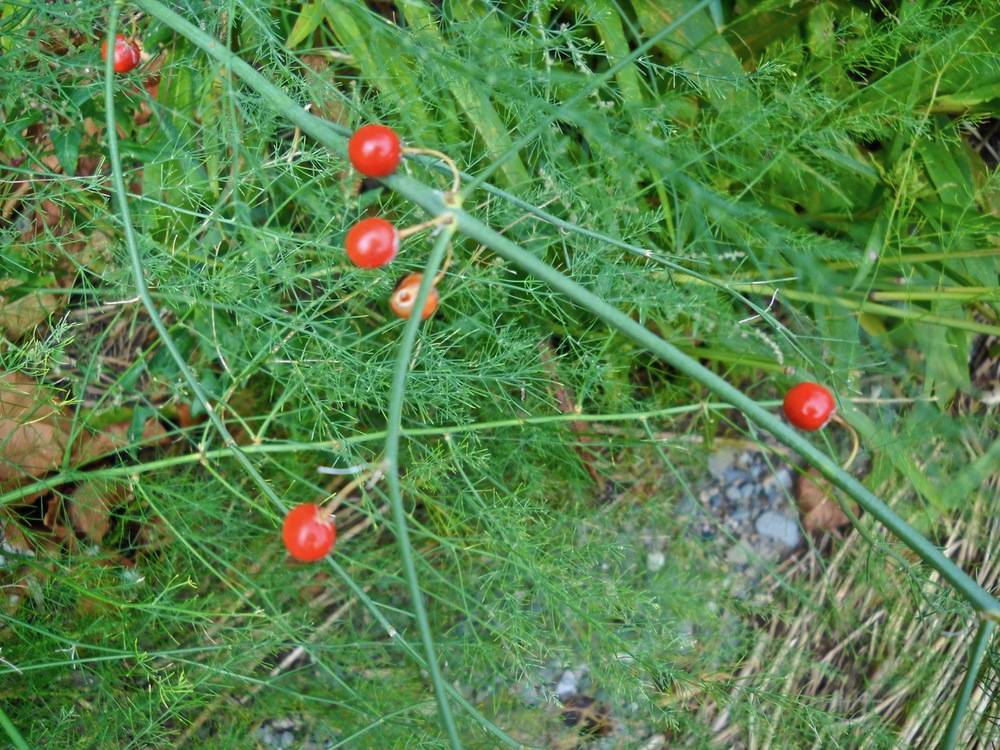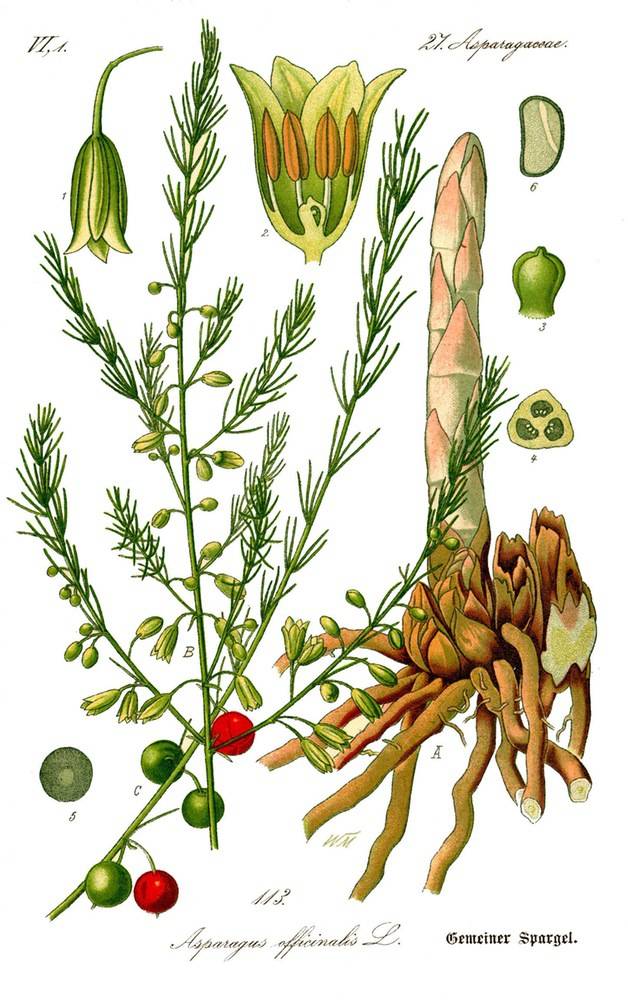asparagus
Like all vegetables, asparagus started out as a wild plant. It is a perennial native to most of Europe and western temperate Asia where it naturally grows in maritime habitats. As a vegetable, it has a long history that dates back to the ancient Egyptians and was enjoyed by the Greeks and Romans. It has been a fixture of European cuisine for many centuries and became available in the United States around 1850.
At Salter Grove, small clumps of asparagus can be found in somewhat saline soil along the causeway, Marsh Trail, and Rock Island Trail. The shoots that appear in the spring look like a very slimmed-down version of what is available in supermarkets.
What appears to be the feathery foliage of asparagus are actually fine needle-like branches. It is dioecious which means each plant has either staminate or pistillate flowers. So, only female plants would have the small berries that ripen to red in the fall. The berries are poisonous to humans but birds readily feed on them and disperse the seeds.
For much of the 20th century, asparagus was only seasonally available to northern hemisphere consumers. However, in more recent decades, it has become available year-round because of successful cultivation on a commercial scale in the southern hemisphere. Given the natural habitat preference of wild asparagus plants, growers increase yield by adding salt around cultivated plants to suppress unwanted weeds.
Besides its culinary importance, asparagus is also valued for medicinal properties that supposedly enhance fertility, alleviate menstrual pains, and increase the production of milk in nursing mothers. It was prescribed in its raw state as a diuretic to alleviate kidney problems and puffiness due to fluid retention. A tea was made with the feathery tops to treat the same ailments.
For more information:
https://gobotany.nativeplanttrust.org/species/asparagus/officinalis/
https://www.luontoportti.com/suomi/en/kukkakasvit/asparagus
https://en.wikipedia.org/wiki/Asparagus
https://www.huffpost.com/entry/asparagus-farms-california_n_7029836
Richardson, J. (1981). Wild edible plants of New England: A Field Guide: Including Poisonous Plants Often Encountered. DeLorme Pub. Co. DeLorme Pub. Co. pp. 79-80.


